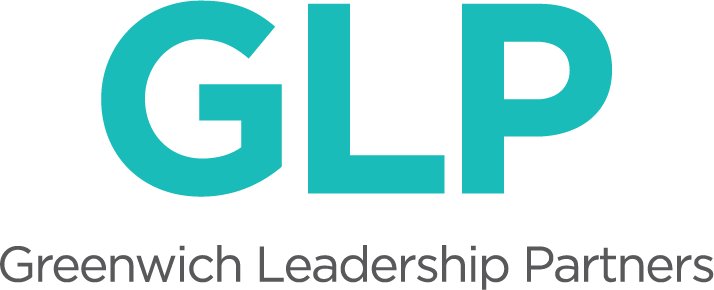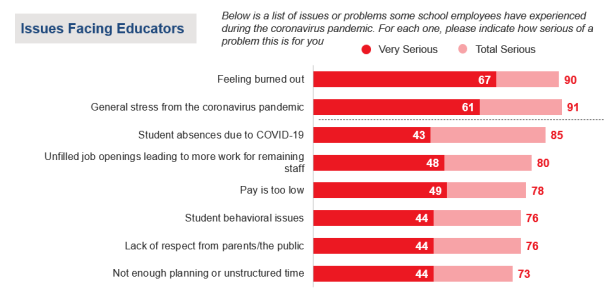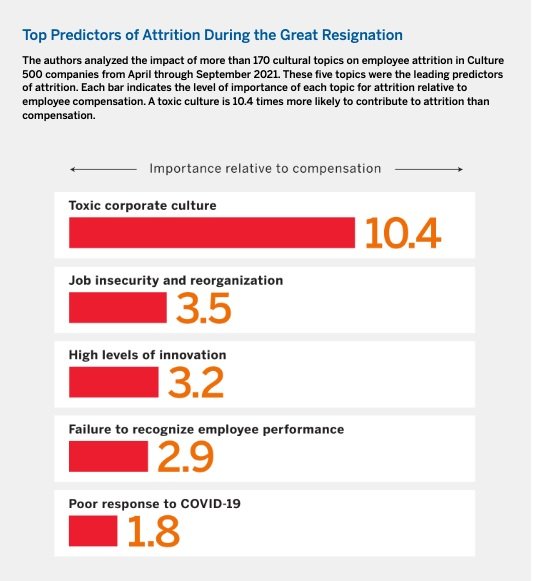A Blog in Three Parts
By Georgy Ann Peluchiwski and Stephanie Rogen
This three part blog post is a result of several conversations between Georgy Ann Peluchiwski and Stephanie Rogen as we reflected independently and together about where we find ourselves at this moment in time in our world. In our dialogue, we traced a throughline of lessons learned from our work together in support of the Latin School of Chicago -- and in our work with many wonderful schools. While this short series in no way fully wrestles with the complexity and gravity of where we are now, we hope it offers some inspiration and some practical guidance as we work towards a better future for our students and our communities.
Part One: A Call to Communicate
Is this time different? We think it has to be, and it starts by communicating with purpose, so that we can expand and sustain conversation and action in pursuit of racial justice. Following the horrific death of George Floyd, on the heels of Ahmaud Arbery and a long and shameful history of similar incidents, the national outcry for change erupted once again - bringing people out onto the streets despite a global pandemic. School leaders, knee deep in addressing the complexities of Covid-19, struggled to make sense of this for their communities when everyone was socially distanced; connected at best, by Zoom. Most schools, if not all, sent some communication as an attempt to acknowledge the anger, hurt, fear, and care for their Black community members, and to promise that they would be part of the solution to address serious inequities in our country. School communities are responding to these statements, and a wide array of voices are sharing experiences, demanding progress, questioning collective commitment, and seeking specifics about how their schools will effective positive and sustained change. In GLP’s work with schools, we’ve noticed the wide range of emotions, stories, and demands evoked by these school communications, and in some cases, significant reactions and backlash from alumni. Social media has expanded the platform for better and for worse, reminding us that we have many voices within our communities, and the work of communication must be open ended, inclusive, ongoing, clear, and profoundly human in tone if we want to make progress.
Whie it’s imperative to communicate, it’s not easy. Schools that fared best in their initial statements spoke with deliberate and careful consideration of both tone and content, centered in mission and values.
So now what? Whatever your initial response evoked, you need to keep communicating to cultivate and sustain a productive dialogue in and with your community.
Broadly, the best strategy is to address your community honestly, to listen openly, with genuine interest and compassion, and to follow up with actions: This is an ongoing and virtuous cycle, one that invites dialogue, seeks a range of perspectives (most importantly students), incorporates feedback, and results in clear next steps. It’s not a one time response or statement of position. Rather, it’s the beginning or the continuation of the most important conversations we have in any community: how might we become better learners, better citizens, and better people, so that we might all participate in a better world?
These invitations and messages may be delivered by your Head of school or your Head and Board together. In either case, the Board must be fully aligned and supportive of the Head - this is a matter of institutional purpose.
Specifically, we offer a few tips that might be helpful as you move through this cycle:
Acknowledge that members of your community, faculty and alumni included, are hurting. Trustees: act as ambassadors of this message anywhere you can, as stewards and guardians of the institution. Heads, school leaders, faculty and staff: hear the voices and experiences, and ensure you have the space and support to make sense of them together, as you consider how to protect, value, and serve your current students better.
Be authentic and transparent about where you are as a school. You may have a long way to go. You may feel you really have not started the work. You may feel that you are deep in the process. Wherever you are - you are not there yet! So speak candidly and lean on your mission and core values as guideposts for the journey. If there is clear, concrete criticism for which you must take responsibility:
Apologize, and promise to do better. It’s okay to be vulnerable and imperfect, in fact it may create an important opportunity to bring your community together to do the hard work that is required. If you are ready, or in process, name what it is specifically that you are doing or that you will do.
Model the way. Trustees and leaders have a special responsibility to lead by example: to take the first steps towards serious reflection, learning, and constructive action. As a way to begin, you might consider the appointment of a special group of the board with the purpose of assessing governance in all its dimensions, to ensure the board reflects and represents the culture, composition, and function you want to see in your school, and to examine how policy development can support progress.
Leaders and boards who work together, with one voice, to address their communities with empathy, compassion, and honesty can build a strong foundation for what’s next: a collaborative process that engages everyone in making our schools more just, more inclusive and equitable. Even in times of calm, leading with one voice can be challenging. Let’s start there.
Part Two: A Call to Trustees (from an Independent School Board Chair)
As a white female board chair who has spent two decades working in schools and other non-profit organizations in Chicago, I am personally struggling to find a productive and meaningful way to contribute to combating racism in our schools and communities. I attended both a public and an independent school in the 1980s, worked in finance, served on several non-profit boards, and have been a parent and/or trustee at the Latin School of Chicago for the past 18 years. While I have seen many positive changes in all of these contexts, I recognize with great sadness how far we still have to go.
Independent schools, like many other institutions, have been actively prioritizing diversity, equity, and inclusion work as central to their missions. How this work plays out in the specific context of each school varies; school policies, strategies, and choices reveal the complexity and underlying tensions between rhetoric and the practice. Some of us have been more successful than others. It is more important than ever that we get this right.
During the past four years, I have had the great honor of supporting our outstanding head of school, Randall Dunn. Randall, a Black man, and I, a white woman, have navigated deep divisions in our community that arose in response to actions and initiatives undertaken to create a more inclusive, diverse, and equitable school. We’ve made some mistakes, we’ve had to adjust our thinking as we expanded our perspectives, and we’ve made progress. I have learned so much from him and from our collective work with our community, and I credit Randall for keeping Latin focussed and committed on what matters most: evolving our culture and program in service of all of our students and families. His leadership is successful because he has been steadfast in purpose, and flexible in practice.
Three lessons learned in leading the change:
First, this is difficult and uncomfortable work. We have to be willing to lean in to the conversations and the work, sometimes amidst uncertainty and criticism. We may be afraid, we may disagree, and we may make mistakes, but we can’t make progress if we avoid what’s uncomfortable.
Second, we must be unwavering in our commitment to make progress. We need to get this right, and that means we need to acknowledge our mis-steps along the way, and swiftly change course, so that we sustain the work, and expand our insight and skill in achieving our goals.
Third, we need to unite in our shared leadership and responsibility for this work. We, as a Board, must move together into the uncomfortable space of frank examination. We must be the change we hope to see - and our progress depends on the recognition that as a Board, we model the way, leading in lock step with our heads and school leaders.
Call to Action:
Today, I ask that we, as trustees, commit and challenge ourselves to examine how we can be part of the solution and agents of change in our schools. This work likely begins with some frank self-assessment and some tough questions. To begin, let’s acknowledge that many of our boards are predominately white and often over represented by families with long histories in our communities; ones who often command significant economic resources. Given that context:
How are we able to serve all of the students in our schools equitably?
Are we willing to challenge the status quo even if it implicates us and our leadership?
Do we have the diversity of background, identity, knowledge, skills, and perspectives we need to authentically represent and steward our communities?
Are we asking the right questions of ourselves as leaders and listening carefully to all voices in our schools? How do we know?
Are we demonstrating true commitment to not just increasing awareness and tolerance but to sustaining deep work to address systemic racism and to prepare the next generation of leaders?
Do we speak with one voice? Can we effectively resolve conflict “inside”, so we can act in concert “outside”?
How are we holding ourselves and our schools accountable?
These are big questions, but we can and must begin to do this work.
Part Three: A Call to Act
Once you have begun communicating your commitment and engaging your community, it is time to consider how you will act upon this commitment. As a Board and leadership team, there is work to do within, and as you do that work in partnership, you must also move outward to engage your community and undertake concrete, school-wide actions towards your goals. A sound process that establishes a frame for design and decision-making is helpful, if not essential, to productive work and consistent, clear communication. To design that frame, we offer these suggestions to shape your next steps:
Start with Questions: asking people how they feel, what they need, and what might work can lead to deeper commitment, understanding and progress in the long run.
What does your community need as a whole? What do key constituencies need?
What do you know? What have you learned? What do you NOT know?
How can you use focus groups, small dialogues, town-halls, or other opportunities for listening, so that you increase your understanding of where different parts of your community are before moving forward? How can these forums also create opportunities for listening and healing?.
As Head of school, what do you need from your board? As a board, what do you need from the Head? Talk openly and frankly about how to stay the course together, and leverage the strengths within.
Build The Case: demonstrate that you are not merely reacting and that this work is necessary and mission driven
How can your mission, vision, values and current strategy support and forge alignment with the commitment to act? How might it cause you to adapt your strategy?
Work backwards from what you believe is essential for learners: how and why is this essential to the outcomes that matter most for your students?
In developing your case, you may want to consider how you incorporate and reflect the feedback and learnings from the community.
Articulate The Vision: your vision emerges as you listen, become clear about where you are, and build the case for where you want to go. People need to see the destination, and you need to help them
How can vision help people make sense of the many words, ideas, approaches? and theories associated with diversity, equity, and inclusion work at your school.
Consider creating a vision statement for DEI specifically. What other work is important?
What will success look like in your school? What is it that you aspire to for your students, families, faculty staff and broader community?
How will you seek evidence of progress?
Assess Culture/Systems: You’ll need to do deeper diagnostic work in order to identify and solve the right problems. Are you ready?
Where are your various constituent groups? What are their current attitudes, values, interests?
What opportunities and challenges might you face in light of the above?
What language matters to you and how will you define the words you use? What is right for your school? Do you have common language, definitions and understandings for this work?
What practices or policies are out of sync with where you want to go?
How is your current leadership talent, organization and culture currently aligned to the vision you have? What support do you need, board, parents, professional development for faculty and staff?
Craft the Plan:
Create a plan of action that involves your faculty, staff and students
Ensure your plan addresses climate, culture, and program/content.
Don’t be afraid to highlight and describe work that is already underway or prior accomplishments. These serve as launch points for what is next.
Set expectations clearly; insist on integration rather than a siloed exercise.
Insist on deep alignment and agreement between school leadership and the board as to what the work will look like and that it matters. Externally, the head and the board must be one as you move forward.
Communicate Commitment and Accountability. As we mention in part one, communication never stops , and it’s a two-way process.
How will you communicate, with frequency, and in many contexts, the case, vision and plan?
How do you demonstrate commitment and create pathways for feedback?
What accountability structures can you build in to improve odds of success and demonstrate commitment?
Measure and Assess:
Define goals and measure and assess progress periodically (may be qualitative measures).
Assess, and reassess. Use this information to communicate and course correct where needed.You will not get it right the first time. That’s okay, continue to assess, ask, adapt and act until you do.
Rinse and Repeat! As with your communication, this is all part of the virtuous cycle of positive change and progress.
Conclusion
This is a call to leadership in an acutely painful moment in history, but in truth, this is the call to work that never ends. Like learning, this is profoundly relational and human work: we must commit to it as an essential part of our mission and purpose in schools. True change will take all of us acting in partnership to lead with compassion and courage to do the right thing for all members of our community. Boards have an important role to play, so lean in, listen, and lead. Our schools, students and our country deserve no less.










